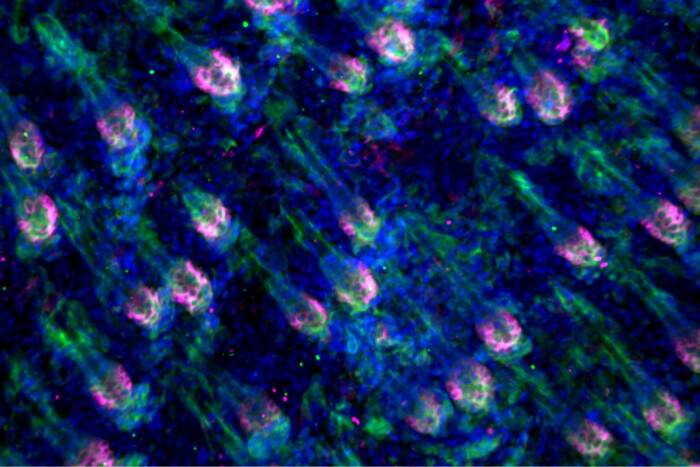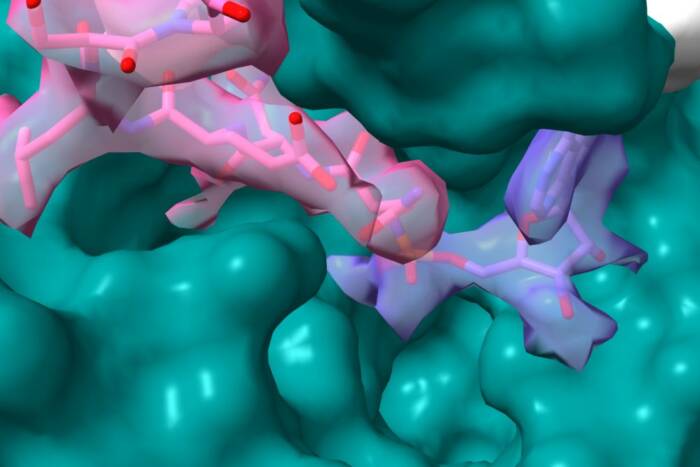Measuring early antibody aptituteds
Rockefeller University study suggests system “checkpoint failure” as one possible cause of autoimmunity
Parents and educators pay close attention to preschoolers’ aptitudes. Recognition of abilities, or potential difficulties, helps garner proper support for the youngsters as they begin their formal education. Now, scientists at The Rockefeller University are measuring early aptitudes, but not in schoolchildren.
For the first time, a group of immunologists from the laboratory of Molecular Immunology at Rockefeller, headed by Michel Nussenzweig, M.D., Ph.D., measured the immunity aptitude of developing B cells found in the bone marrow and blood of healthy adults. B cells, made in the bone marrow, are the immune system cells that produce antibodies.
Postdoctoral associate and first author Hedda Wardemann, Ph.D., and her colleagues discovered that between 55-75% of premature B cells are prone to bad behavior, or auto-reactivity. Their results, published in Science Sept. 5 (online in Science Express Aug. 14), create a benchmark for future studies on autoimmunity.
“Until now, there has been no measurement of the immune system that helps researchers determine precisely how and when auto-reactivity occurs,” says Nussenzweig. “We can compare our measurement of early auto-reactive B cells in healthy adults to those of people with autoimmune disorders.”
Not only have the Rockefeller scientists measured the high percentage of auto-reactive early B cells, they have determined that two checkpoints along the road to maturity safeguard the body from them. This discovery helps scientists begin to understand whether autoimmune diseases like lupus or rheumatoid arthritis arise when the early, checkpoint system fails, or whether normal B cells become auto-reactive later, as mature cells circulating in the immune system.
Antibodies, tiny Y-shaped molecules, can be a source of trouble. In an autoimmune reaction, antibodies, normally a first line of defense against potentially harmful antigens from outside the body, recognize the body’s own tissues by binding to them, and trigger an immune system attack. Wardemann and her colleagues in the Nussenzweig laboratory cloned antibodies from single B cells in different stages of development and expressed the antibodies in vitro to determine their aptitude for immunity.
Just as educators caution not to pre-judge students, Rockefeller scientists urge circumspection when it comes to evaluating early B cells. “It’s not so surprising that a large percentage of early B cells show auto-reactive capacity,” says Wardemann. “The immune system’s responsibility for recognizing antigens is vast. The B cells must possess an almost unlimited antibody capacity from the very beginning.”
Now, early B cells from the blood of lupus patients are the source of a new inquiry initiated by scientists here in the laboratory of Molecular Immunology.
Many B cells left behind-intentionally
Ever since scientist Paul Erlich coined the term “horror autotoxicus” in his groundbreaking studies of the immune system at the turn of the 20th century, biologists have investigated the immune system’s dark side of autoimmunity, or the potentially life threatening diseases caused by the immune system’s reaction to the body’s own tissues. The root cause of this phenomenon seems to coincide with the immune system’s very efficiency. In other words, the price of diversity is a system burdened with an initially auto-reactive B cell repertoire.
But until now, scientists have measured neither the capacity of B cells to contribute to autoimmunity nor the timing of the mechanisms by which they do so. “In the past 20 years, immunologists have learned the three mechanisms by which auto-reactive B cells are silenced, or removed, from the system,” says Wardemann. Now we know that two of them – receptor editing and anergy – quell early auto-reactive B cells before they enter duty in the immune system.
B cells aren’t the only players in the landscape of autoimmunity; T cells, aided by antigen-presenting cells such as dendritic cells, read the signatures of antigens that have been bound to antibodies produced by B cells, with eradicating results. However, by discovering that a majority of early B cells are auto-reactive, and the means by which they are halted before maturity, Wardemann and her colleagues provide new scientific incentives for tackling autoimmune disease.
News Releases by this Head of Laboratory
Resident protection(opens in new window)
“Genome destroyer” identified in the immune system(opens in new window)


